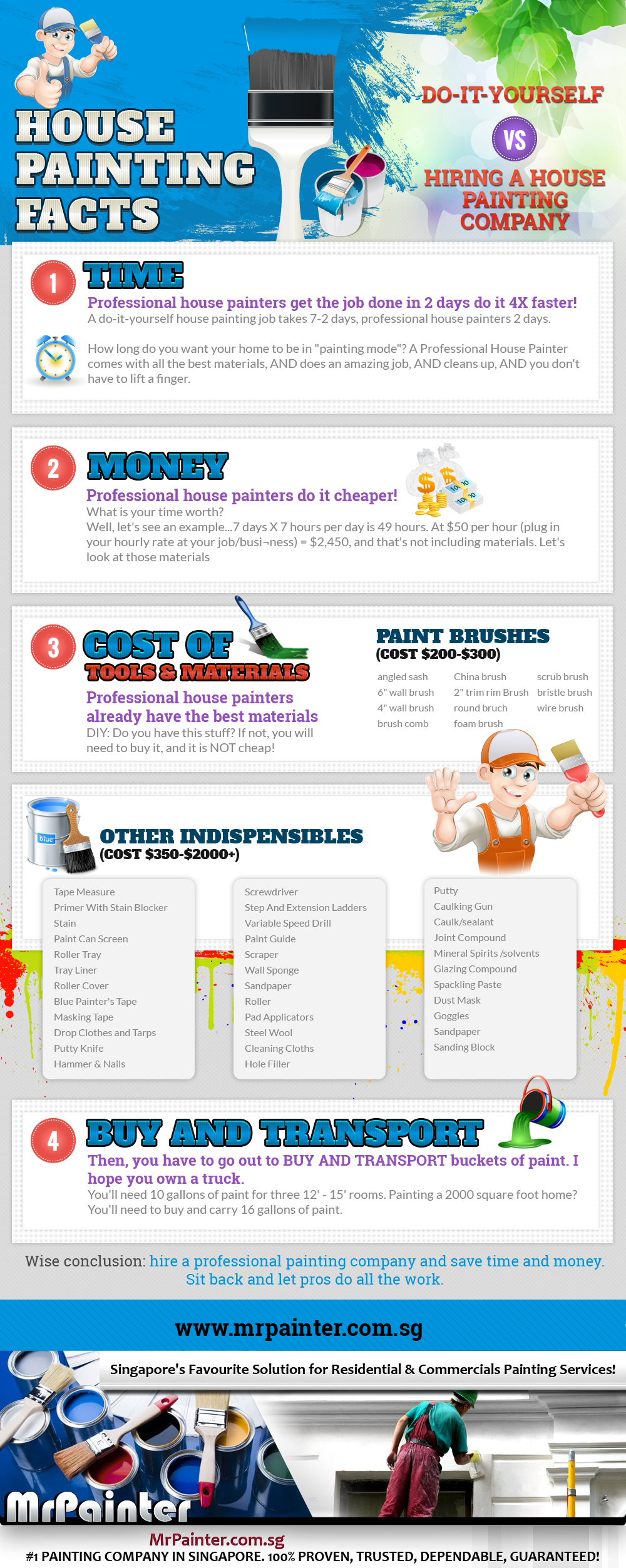Understand How Weather Influences Commercial Paint Jobs And Find Necessary Methods To Navigate Unpredictable Conditions For Optimal Outcomes. What Will You Learn Next?
Understand How Weather Influences Commercial Paint Jobs And Find Necessary Methods To Navigate Unpredictable Conditions For Optimal Outcomes. What Will You Learn Next?
Blog Article
Article Developed By-Blom Philipsen
When you're managing a commercial paint task, you can't disregard exactly how weather condition plays a critical role in your success. Variables like temperature level, humidity, and wind can either improve or weaken your initiatives, impacting everything from application quality to safety and security on the job site. You might think you can repaint anytime, however the truth is that particular problems can cause pricey hold-ups or bad finishes. Understanding Visit Webpage is essential, but what details approaches can you execute to guarantee ideal results in the middle of unpredictable weather?
Temperature and Paint Application
When it comes to business painting, temperature plays a critical role in exactly how well the paint adheres and dries. If you're planning a task, keep an eye on the temperature level array recommended by the paint maker. Preferably, you intend to work within that range for optimal outcomes.
When temperature levels are as well reduced, paint can come to be thick and more difficult to apply, resulting in uneven coverage. You might find yourself fighting with brush strokes or roller marks that simply won't vanish.
On the other side, heats can cause paint to completely dry too quickly. This can lead to concerns like fracturing or peeling off, as the paint doesn't have adequate time to bond effectively to the surface.
If it's too warm, take into consideration arranging your work for cooler components of the day, such as early morning or late mid-day.
Humidity and Finish High Quality
Moisture significantly affects the coating high quality of industrial paint projects. When humidity degrees are high, dampness airborne can disrupt the drying procedure of paint. https://www.digitaljournal.com/pr/4774554 can lead to problems like poor bond, uneven finishes, and boosted drying times.
You may locate that your paint takes longer to treat, which can delay your job timeline.
On the other hand, reduced moisture can additionally position issues. If the air is too completely dry, paint can dry out as well rapidly, protecting against appropriate leveling and leading to a harsh coating. You want your paint to stream efficiently, and quick drying out can prevent that, leaving you with an unsatisfactory surface.
To attain the very best surface, aim for moisture degrees between 40% and 70%. This range enables optimum drying out problems, guaranteeing that the paint adheres well and levels out correctly.
Consider utilizing dehumidifiers or followers to regulate moisture in interior jobs, and try to prepare outside jobs for days when humidity is within the perfect range. By paying attention to humidity, you can improve the final appearance and sturdiness of your industrial paint work.
Wind and Outside Conditions
While you mightn't consider wind as a major factor, it can significantly affect the outcome of outdoor commercial painting tasks. High winds can disrupt your application procedure, causing paint to completely dry too quickly. When repaint dries also quick, it can cause an uneven surface or noticeable brush strokes.
You'll additionally encounter challenges with paint overspray, as wind can bring particles far from the intended surface, leading to lost products and potential damages to bordering locations.
In relevant resource site , strong gusts can produce safety and security risks at work website. Ladders and scaffolding are extra at risk to tipping in gusty problems, placing your team in jeopardy. It's vital to keep track of wind rates prior to beginning a job. If winds go beyond safe limits, it's ideal to postpone your job to make certain a quality surface and keep safety.
On calmer days, you can make use of the excellent problems to attain smooth, professional results. Always examine the weather report and plan as necessary.
Conclusion
Finally, comprehending how weather influences industrial painting is vital for achieving the most effective outcomes. By keeping track of temperature, moisture, and wind conditions, you can schedule your jobs throughout optimum times. This not only makes certain a smooth application yet also boosts the high quality of your surface. So, keep an eye on the projection and plan accordingly-- doing so will save you time, cash, and disappointment while delivering an expert end result each time you repaint.
